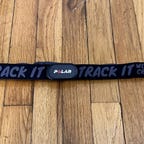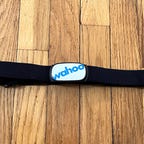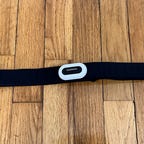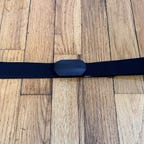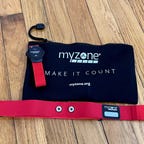
The health of your heart is paramount to your overall health and wellness. To stave off heart disease there are several things you can do — including eating a healthy diet and getting active. In fact, the World Health Organization recommends adults should do at least 150 minutes of moderate-intensity aerobic exercise per week. One great way to keep track of this is by picking up a chest strap heart-rate monitor. Though wearables like smartwatches and smart rings can measure your heart rate easily on the go, the best heart-rate monitors offer some of the most accurate heart-rate readings. Many chest strap heart-rate monitors can also easily pair with your smartwatch, fitness tracker or smartphone.
Heart-rate monitors are helpful for a range of scenarios, including if you’re an athlete training for a race, since they can help you improve your performance or adjust your goals. If you’re the average person who works out for health or fun, tracking your heart rate can keep you in tune with your cardiovascular system, such as monitoring irregular heart rhythms or knowing your heart rate variability, or HRV.
Chest strap heart-rate monitors have a reputation for being uncomfortable to wear during exercise, but we found a few that passed the wear test. Below, you’ll find our picks for the best chest strap heart-rate monitors. We update this list periodically as new models become available.
The Polar H10 is ideal for outdoor activities. You’ll need to download the Polar Beat app to get the most out of it. The app is available for both iOS and Android, and uses Bluetooth and ANT Plus connectivity to pair with different devices. The Polar H10 can connect to two Bluetooth devices at once, so you can connect it to both your smartwatch and a compatible piece of fitness equipment, like some treadmills or exercise bikes. The heart-rate monitor is easy to clip on and adjust and comes in a variety of sizes to fit most users. The battery on this heart-rate monitor lasts up to 400 hours.
The Wahoo Tickr X is one of my favorite heart-rate monitors because it’s comfortable enough that you forget you’re wearing it. The heart-rate monitor is easy to strap on and adjust, and the chest strap fits chests from 23 to 48 inches. It’s also waterproof, so it’ll function even at your sweatiest. You’ll need to download the Wahoo app (available for iOS and Android) to connect the heart-rate monitor, but it’s also compatible with more than 50 third-party fitness apps, and Garmin watches. It uses simultaneous Bluetooth and ANT Plus technology, which makes it easy to connect to a smartwatch and your phone. According to the Wahoo website, this heart-rate monitor offers over 500 hours of battery life.
If you’re a loyal Garmin user or want a heart-rate monitor with a long-lasting battery, you’ll like the Garmin HRM-Pro. Impressively, this heart-rate monitor can last about a year, as long as you only use it an hour per day. The chest strap can comfortably fit chest sizes ranging from 25 to 43 inches, but there is an optional strap extender that goes up to 56 inches. It’s also waterproof so it’s appropriate for swimming. The Garmin HRM-Pro has both Bluetooth and ANT Plus, and its app is available for iOS and Android. It’s easy to connect your device via the app, and it’s also compatible with third-party fitness apps like Zwift or Strava, as long as they’re paired with Bluetooth.
If you aren’t looking to spend a lot of money on a heart-rate monitor, consider the CooSpo H808S. The CooSpo H808S chest strap uses ANT Plus and Bluetooth, has its own app (CoospoRide), and it can also connect to various third-party fitness apps like Polar, Wahoo, Endomondo, UA Run, Garmin, Peloton and more. This heart-rate monitor offers 300 hours of battery life, which is not the highest, but is appropriate if you’re an average exerciser.
The MyZone MZ Switch is one of the easiest chest strap heart-rate monitors to use if you’re a beginner. The kit comes with a wrist and chest strap so you get even more accurate results. It also includes a carrying case so you can keep everything neatly together.
How we tested chest strap heart-rate monitors
Function during exercise: I tested each one of these heart-rate monitors during strength training and walking workouts to see how well they work for various activities.
Comfort: I rated them based on how comfortable the chest strap felt during my workouts.
Features: I considered the function of various features, like connectivity to other devices or apps, and whether other metrics are captured in addition to heart rate. I also looked at the battery life.
Compared it to a trusted heart-rate monitor: I compared it to my Apple Watch, which captures my heart rate throughout my workouts. While this might not be the best method of testing for accuracy, it’s what I had available to me, and the Apple Watch data is easy to read and consistent.
Factors to consider
- Determine what type of activity you will be doing while wearing a chest strap heart-rate monitor. Most are suitable for a range of cardio activities, from running to cycling, but not all would work for swimming, for example.
- Decide how much you’re willing to spend on a chest strap heart-rate monitor. You can find reliable ones for under $50, but if you want all the bells and whistles you can expect to spend over $150.
- Figure out how important battery life is to you and how often you want to charge or replace it. Some chest strap heart-rate monitor batteries can last over a year, while others can last around 500 hours. This will vary per device and how often you use it.
- Decide if you will be connecting the heart-rate monitor mainly to your smartphone or if you plan on connecting it to other devices. This will influence whether you want it to have ANT Plus or Bluetooth connectivity. Most now come with both, but it’s still important to check.
How to choose a chest strap heart-rate monitor
When it comes to choosing the best heart-rate monitor chest strap for your workout, many of the factors in your buying decision will be based on personal preferences and your workout regimen. Here are a few things to look at while shopping.
Strap width: Before you buy, consider whether you’d be more comfortable with a heart-rate tracker that uses a slim strap or a wider one.
Module size: Some chest straps use tiny modules (the plastic puck-like part) that don’t extend over the edges of the strap. Others, however, use larger monitors to measure your heart rate. Which style you choose to track your workout depends on your comfort preference.
Internal storage: If you don’t like to hold your smartphone during your workout, opt for a heart-rate training monitor that can store your data in its own built-in storage. You can later transfer your heart-rate reading to your phone via your monitor’s companion app.
Metrics: Consider what you want to monitor during your workout. Higher-end models capture real-time data covering everything from run cadence to stride length, as well as things like blood pressure, calorie burn and heart-rate variability to help you reach your fitness goals, while more basic models might track only your heart rate.
Battery: A wearable chest strap monitor can have all kinds of power sources. Some have a rechargeable battery. Others may have super-long battery life, but the battery isn’t user replaceable or rechargeable. A longer battery life is always convenient — no one wants a monitor to peter out during a run — but there are lots of options. Make sure to check the description for battery life before buying a monitor.
Chest strap vs. wrist-worn heart-rate monitors: Chest strap and wrist-worn heart-rate monitors are both used to measure heart rate, but they use different methods to provide readings.
Electrical heart-rate sensors, found most commonly in chest strap heart-rate monitors, can detect electrical currents produced by your heart, somewhat similarly to what is done at the doctor’s office with an ECG. These are considered the most accurate heart-rate readings because the electrical sensor can handle measuring your heart rate even during vigorous activity.
Optical heart-rate sensors use an LED light to track your pulse rate in the arteries as blood pumps through them. Optical heart-rate sensors are found in smartwatches and are useful to read your heart rate while at rest or walking, but are less reliable for high-intensity activity because the readings can be distorted.
ANT Plus vs. Bluetooth: Most wrist-worn heart-rate monitors like the Apple Watch use Bluetooth, which only lets you connect to one device. For example, if you’re recording an outdoor run, you can only connect your Apple Watch to your iPhone.
ANT Plus technology, however, lets you wirelessly connect to multiple devices at once. This is a good option for athletes who are trying to track data from multiple sources. You can find this form of technology on devices like chest strap heart-rate monitors, indoor or outdoor bike computers and some smartwatches.
However, if you’re planning on using a device that uses only ANT Plus technology and want to connect it to your smartphone, know that some Androids have ANT Plus technology capabilities, while iPhones do not. To find out if your device is capable of connecting to your Android, you have to find the ANT Plus Plugins app in the Google Play store and browse its compatible device directory. If you have an iPhone or an Android that does not have the capability to connect to your ANT Plus device, you will need an adapter to add to your phone.
Most people prefer the Bluetooth option because it connects faster and it’s easily found on most devices. The good news is there are many heart-rate monitors that include both ANT Plus and Bluetooth to make the user experience easier.
Heart-rate monitor FAQs
Are heart-rate monitors accurate?
This depends on the type of device you’re using to track your heart rate. Chest strap heart-rate monitors tend to provide the most accurate readings.
Are chest strap or wrist-worn heart-rate monitors more accurate?
